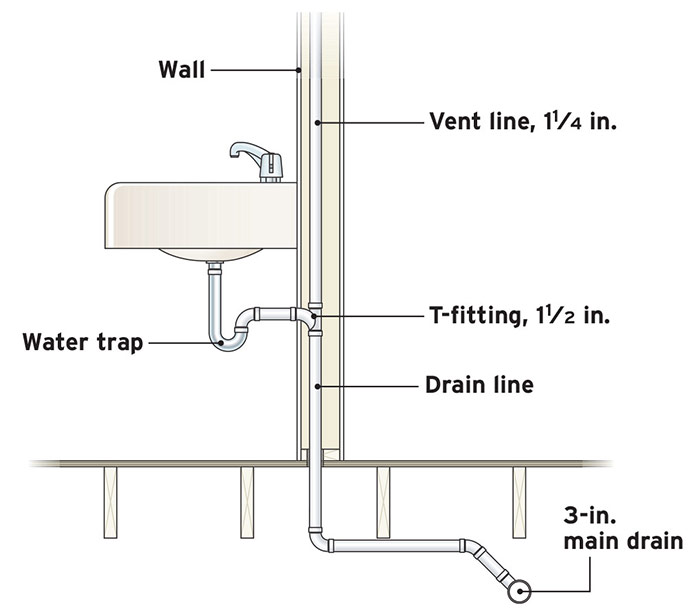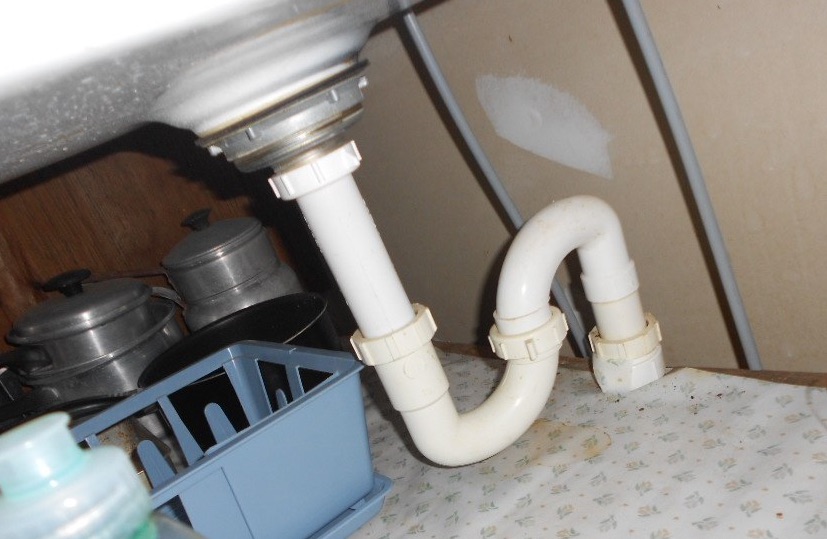The Way Adequate Ventilation Protects Your Plumbing System
The Way Adequate Ventilation Protects Your Plumbing System
Blog Article
We have found this post involving What Is A Plumbing Vent & How Do They Work? directly below on the web and thought it made sense to discuss it with you in this article.

Proper air flow in pipes systems is frequently ignored, yet it is critical for keeping the performance and safety of your home's pipes. Air flow assists regulate air pressure, stop the buildup of harmful gases, and make sure the efficient elimination of waste. In this guide, we will certainly discover the relevance of appropriate plumbing ventilation, just how it functions, and the benefits it offers your plumbing system.
Understanding Air Flow in Plumbing
Ventilation in plumbing describes the network of pipes that allow air to move via the drain system. These vents serve several objectives, consisting of managing air pressure within the pipes, preventing drain gases from going into the home, and helping in the smooth circulation of wastewater.
Exactly How Air Flow Functions in Plumbing Equipments
Air Pressure Policy
Appropriate ventilation maintains balanced air pressure within the plumbing system. When water flows via pipes, it displaces air. Without adequate air flow, this variation can develop unfavorable stress, leading to reduce drains or siphoning of water from traps, which can trigger unpleasant smells to permeate right into the home.
Avoiding Sewer Gas Accumulation
One of the most critical features of pipes vents is to avoid sewage system gases, such as methane and hydrogen sulfide, from building up within the home. These gases can pose severe health risks and are extremely combustible. Vent pipelines enable these gases to escape safely outside.
Helping in Waste Elimination
Air flow helps in the reliable removal of wastewater by preventing airlocks in the drain system. When air can move easily through the vents, it enables water and waste to flow smoothly with the pipes, reducing the threat of obstructions and backups.
Types of Pipes Vents
Key Heap Vent
The primary pile air vent, also referred to as the vent stack, is the primary air vent in a plumbing system. It extends from the primary drainpipe line up through the roof, permitting gases to run away and fresh air to enter the system.
Branch Vent
Branch vents link to the primary pile air vent and offer individual components, such as sinks, commodes, and showers. These vents ensure that each component has appropriate ventilation to operate correctly.
Air Admittance Shutoff (AAV).
An Air Admittance Shutoff (AAV) is a one-way valve that allows air to go into the plumbing system without the requirement for a typical vent pipe expanding with the roof. AAVs are commonly used in remodellings or areas where installing a standard air vent is unwise.
Indications of Poor Air Flow in Plumbing.
Slow Draining Fixtures.
If your sinks, bathtubs, or bathrooms are draining pipes slowly, maybe an indicator of bad air flow. Insufficient air circulation can create a vacuum result, making it tough for water to drain pipes properly.
Gurgling Seems.
Gurgling noises coming from drains pipes are usually an outcome of air being sucked via water catches as a result of unfavorable stress in the pipelines. This is a clear indicator of inadequate air flow.
Unpleasant Smells.
Sewer odors inside your home are a warning that your plumbing system is not appropriately aerated. This could indicate that sewage system gases are not being sufficiently vented outside, resulting in potentially hazardous conditions.
Typical Air Flow Blunders.
Poor Vent Sizing.
Using undersized air vent pipes can cause bad air flow and pressure inequalities in the system. It's vital to use vents that satisfy the details needs of your pipes system.
Improper Vent Placement.
Placing vents as well much from the fixtures they serve can reduce their effectiveness. Appropriate positioning makes sure that air can stream easily and efficiently through the system.
Ignoring Code Requirements.
Building ordinance offer particular guidelines for pipes ventilation. Disregarding these codes can result in a system that stops working to work properly and may lead to pricey repair services or carcinogen.
Advantages of Proper Ventilation.
Improved System Performance.
Properly ventilated plumbing systems run extra effectively, with less clogs, faster draining pipes, and less pressure on the pipelines. This efficiency extends the lifespan of the pipes system.
Improved Air High Quality.
By preventing sewer gases from entering your home, proper air flow contributes to much better indoor air quality, making your living setting healthier and more comfy.
Preventing Water Damage.
Ample ventilation aids protect against water from being siphoned out of catches, which can cause drain gases going into the home and creating water damage gradually.
Actions to Ensure Appropriate Ventilation.
Consulting Pipes Codes.
Always consult local pipes codes when developing or customizing your plumbing system. These codes give the needed standards for proper venting and ensure your system meets security standards.
Regular Assessment and Maintenance.
Regular evaluations can aid identify possible ventilation concerns before they come to be significant troubles. Upkeep jobs, such as cleaning vent pipelines and looking for blockages, are important for maintaining the system in good working order.
Expert Installation.
For brand-new installments or significant alterations, it's important to employ a professional plumbing. They have the proficiency to make sure the ventilation system is properly developed and set up according to code.
Final thought.
Correct air flow is an essential element of any kind of pipes system, ensuring that it works efficiently and securely. By recognizing the importance of air flow, identifying the indicators of bad ventilation, and taking actions to keep your system, you can avoid costly concerns and safeguard your home's air high quality.
4 Things You Should Know About Your Plumbing Vents
What Plumbing Vents Are
Also called a vent stack, a plumbing vent is a vertical pipe attached to your drain line that runs through your roof. The plumbing vent pipe, or plumbing air vent, removes gas and odors from your plumbing system and allows fresh air to enter the pipes, helping the water to flow out of the drain pipes.
What Plumbing Vents Do
Plumbing vents have two basic functions. One of which is to allow unpleasant smelling wastewater and sewer gasses to escape your plumbing system instead of entering your home. Plumbing vent pipes are typically located on roofs, away from windows, to ensure the fumes exit the home completely.
The other function of the plumbing vent is to move fresh air into your plumbing system. This helps move water through every plumbing fixture in your house, like toilets and sink drains. Think of the way in which you need to let a little air into the bottle as you pour soda in order to make the drink flow smoothly.
Different Types of Plumbing Vents
True vent: This is the most common vent option. In simplest terms, a true vent is a vertical pipe attached to your drain line that exits through the roof. They often function as the main vent that other fixtures can connect to. Re-vent pipe or auxiliary vent: Attached to the drain line near specific plumbing fixtures, re-vent pipes run up and over to connect to the main vent. Common vent: Two plumbing fixtures installed on opposite sides of a wall are typically tied into the vent stack using something known as a sanitary cross. Wet vent: This venting option operates as a drain pipe and a vent at the same time. Wet vent drainage systems drain water from one fixture while venting the air from another. Although they’ve been used for over 100 years, wet vent systems have only recently been added to the plumbing code in many areas. If you’re planning on installing one in a bathroom remodel, make sure you check your local code prior to construction. Loop vent: For free-standing fixtures like kitchen island sinks, loop vents are ideal. These vent pipes run under the floor, rise from the P-trap, and create a loop inside the cabinet sink. Air admittance valve: An AAV is a one-way mechanical valve typically installed at the site of the plumbing fixture. AAVs allow venting to occur without having to tie into a larger venting system. They’re ideal for venting fixtures where you aren’t able to easily connect to an existing vent system. Common Plumbing Vent Issues
Although vent pipes typically don’t have water flowing through them, they’re still subject to many typical plumbing issues. For example, clogs are one of the most common problems associated with sewer vent pipes. If your vent pipe gets clogged, all of your plumbing fixtures tied into the vent stack will be affected.
A sink with a slow drain that bubbles and gurgles or a strong sewage smell around your toilet are both indicators that your toilet vent pipe is clogged. Because most vent pipes exit through the roof, old leaves, twigs or even a bird’s nest could be clogging the pipe.
Clogs in your vent pipe system cause a buildup of negative pressure, meaning that water won’t be able to flow out of your home very well. It’s similar to putting your finger over the opening of a straw to trap water inside. When you remove your finger, the water is able to flow out of the straw.
If you suspect you have any blockage in your vent, make sure you have a professional come examine the situation. Left unchecked, a blocked air vent can lead to other costly repairs, like leaks and sediment buildup.
Under Pressure
Pipe vents are essential aspects of a home’s plumbing system. Owning a home means learning about all sorts of things you never put much thought into before. But by understanding as much as you can about the important systems of your home, you can keep those budgets intact and those anxiety levels low.
https://www.homeserve.com/en-us/blog/home-improvement/plumbing-vents/

I recently found that entry about What Is A Plumbing Vent & How Do They Work? when doing a search on the web. Do you know about anybody else who is involved in The Upsides of Proper Ventilation in Plumbing Design? Feel free to promote it. We thank you for your readership.
Click On This Link Report this page